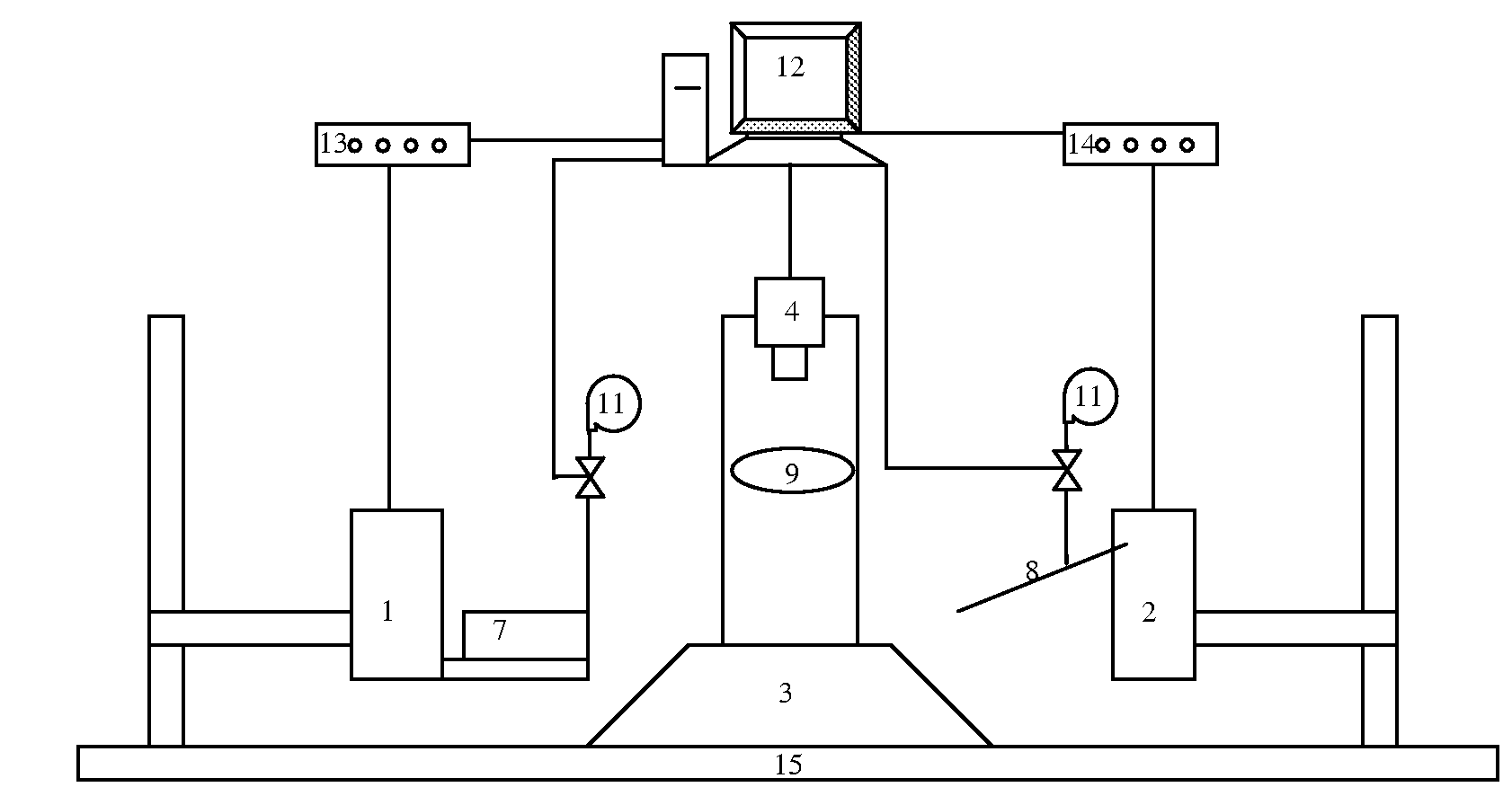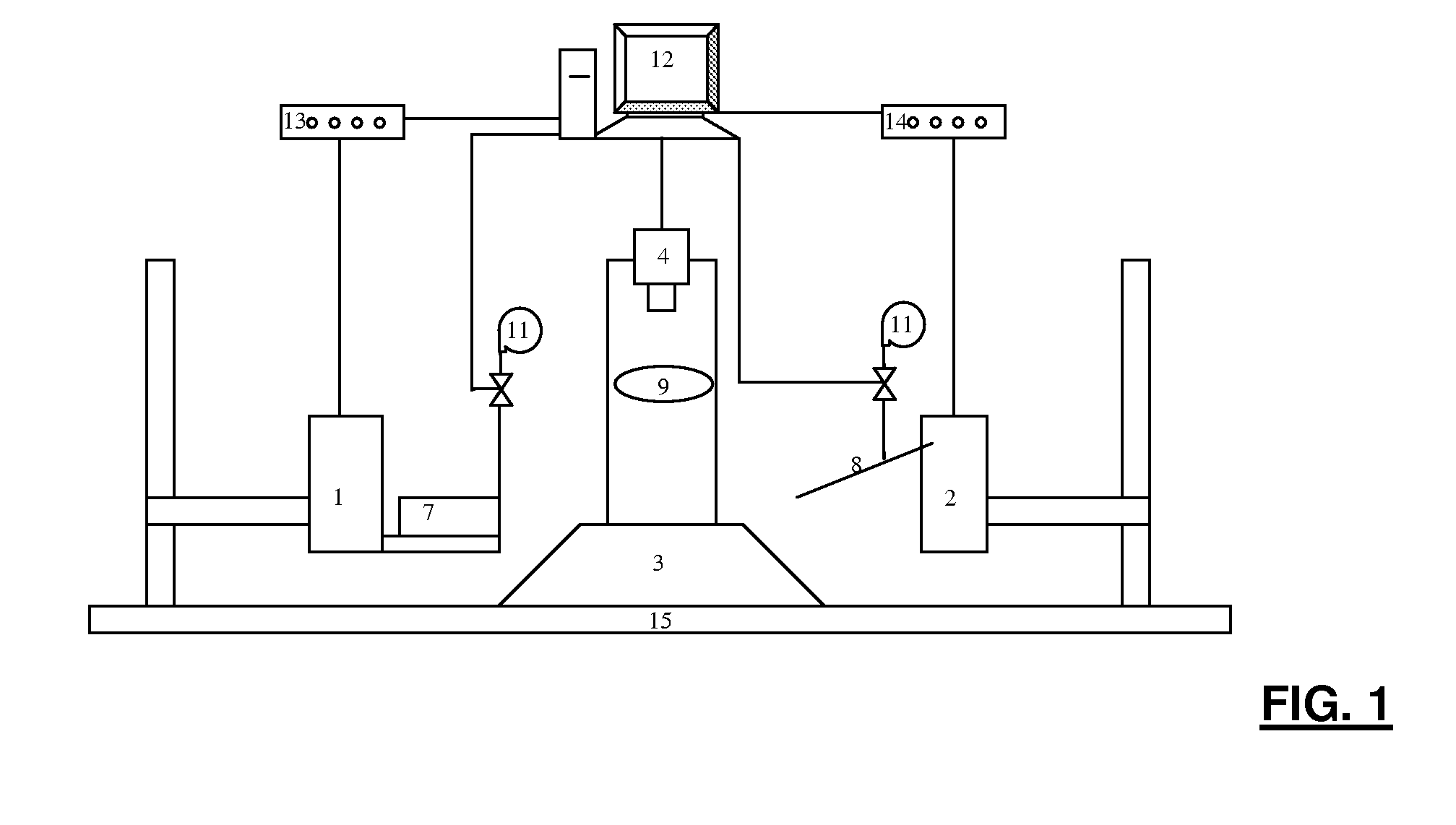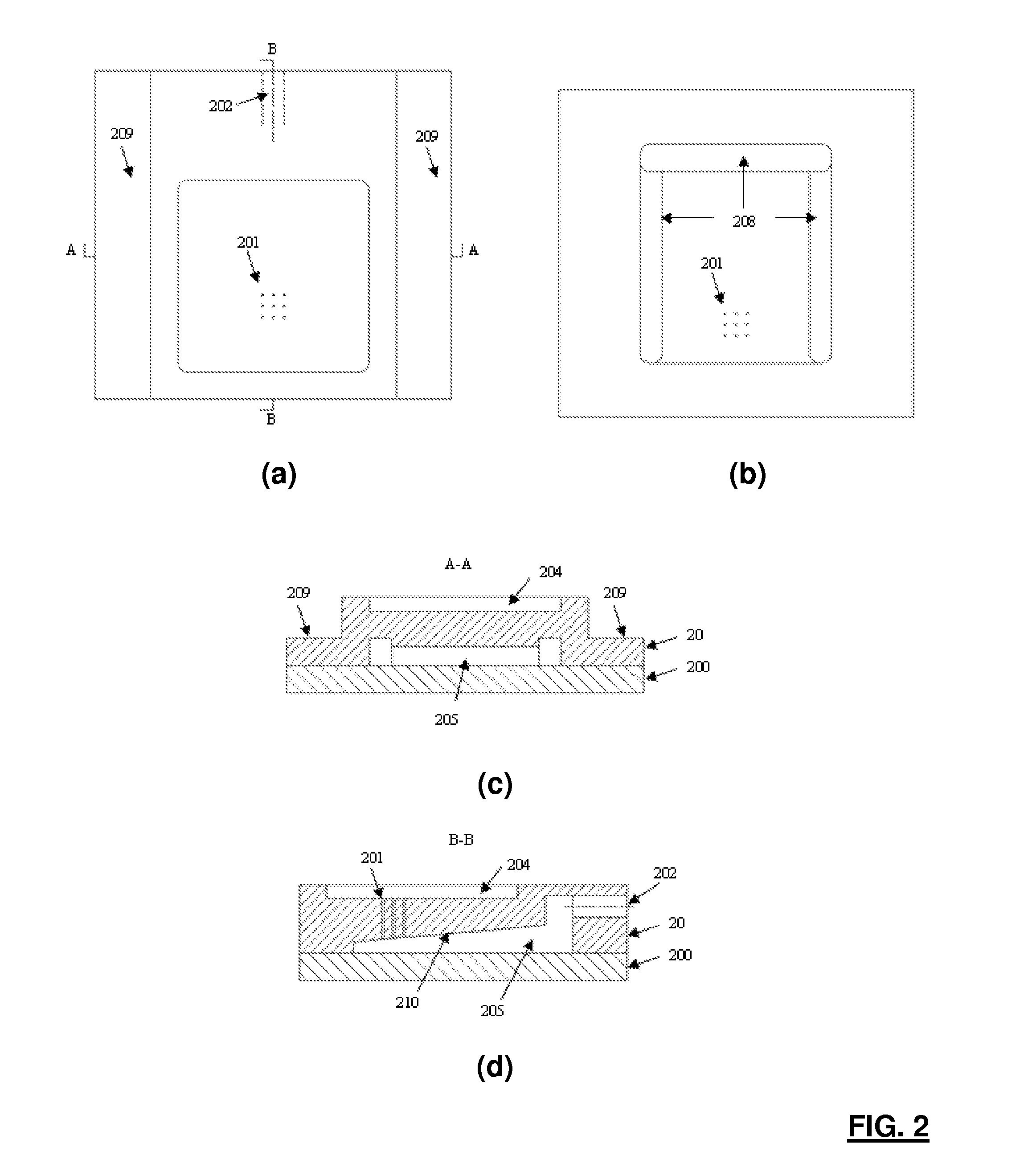High-throughput automated cellular injection system and method
- Summary
- Abstract
- Description
- Claims
- Application Information
AI Technical Summary
Benefits of technology
Problems solved by technology
Method used
Image
Examples
Embodiment Construction
[0035]With reference to FIG. 1, a system in accordance with the present invention comprises the following main components:
[0036](i) Two motorized positioning devices (herein termed ‘positioner’) 1, 2, such as multi-DOF motorized positioning stages or microrobots / micromanipulators that control the motion of embryos and micropipette 8, respectively.
[0037](ii) Control software unit running on a host computer 12 for motion control and image processing.
[0038](iii) Positioner control device 13, 14 connected to or mounted on the host computer 12 to physically provide control signals to the two positioners 1, 2 and the pressure unit 11 (component viii).
[0039](iv) An embryo holding device 7 placed on one positioner 1.
[0040](v) An injection means in the form of a micropipette 8 (e.g., glass capillary or microfabricated needle) attached to the second positioner 2. The tip of the micropipette 8 is preferably about 100 to 800 μm long, and more preferably about 600 μm long, and preferably about 5...
PUM
 Login to View More
Login to View More Abstract
Description
Claims
Application Information
 Login to View More
Login to View More - R&D
- Intellectual Property
- Life Sciences
- Materials
- Tech Scout
- Unparalleled Data Quality
- Higher Quality Content
- 60% Fewer Hallucinations
Browse by: Latest US Patents, China's latest patents, Technical Efficacy Thesaurus, Application Domain, Technology Topic, Popular Technical Reports.
© 2025 PatSnap. All rights reserved.Legal|Privacy policy|Modern Slavery Act Transparency Statement|Sitemap|About US| Contact US: help@patsnap.com



